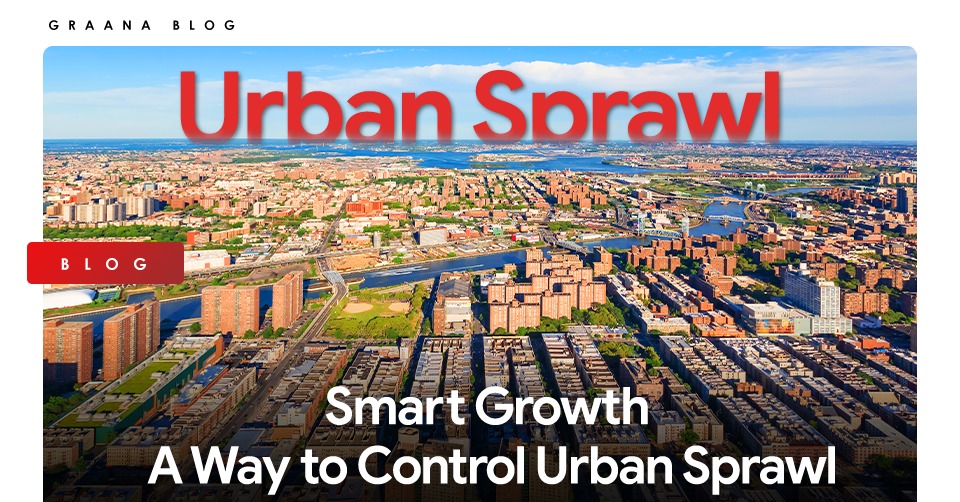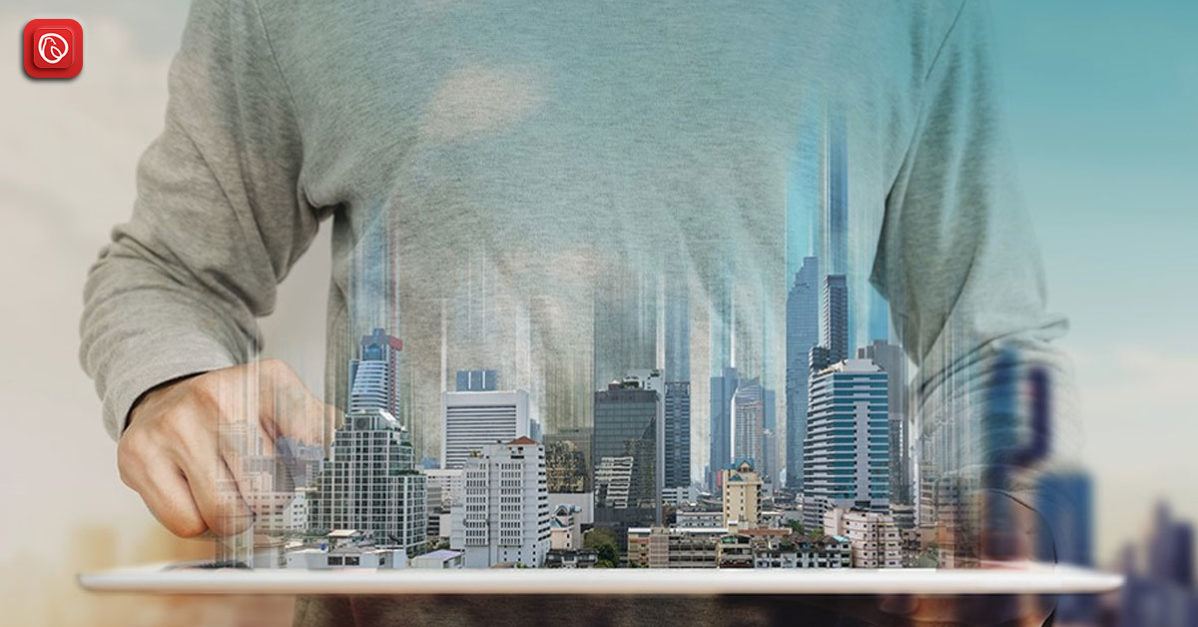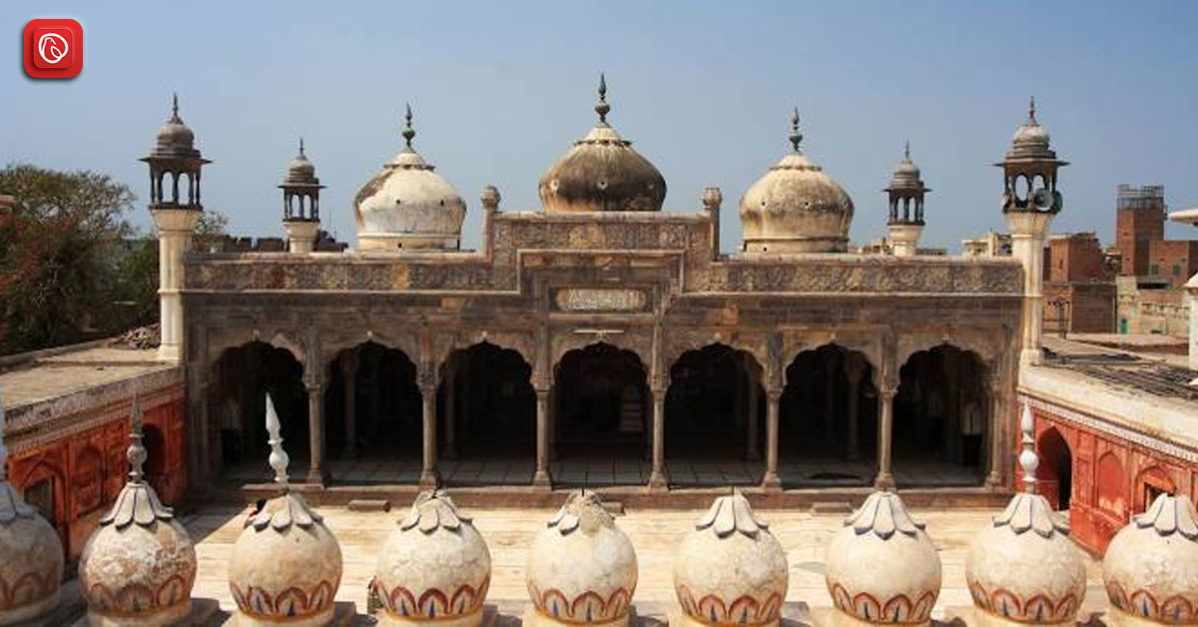Urban Sprawl
Urban sprawl is the spillover of urban areas onto the restricted land allocated for agricultural purposes, buffer zones, or green land. The density of urban areas denotes the number of residents living in a unit of the urban area. This density decreases as the urban sprawl increases on the peripheral sides of the city. As urban sprawl surges, pollution, traffic congestion, deforestation, and wildlife endangerment peaks.
Urban sprawl is the most pertinent issue in today’s land use in Pakistan as colonies, and new towns expand horizontally and sometimes vertically. Urban sprawl degrades soil quality, hampers groundwater levels, and increases the risk of flooding and contamination – G-11 in Islamabad is a prime example. It is costly, unmanaged, unsustainable, and inefficient.
Three Ways Urban Sprawl Can Mushroom
Strip Development
Such an urban sprawl grows alongside public highways with minimal linkages to other land uses, the preponderance of single-story buildings, and lack of access to the areas except through the highway.
Scatter Development
This outward urban growth is scattered and haphazard, often not in line with the present settlements. If it stems from an existent settlement, it usually does not follow the same pattern, land use, or features.
Linear Expansion
Such an urban sprawl is not residential or commercial but is rather associated with sewerage pipes, utility lines, roads, railroads, gas pipelines, telephone lines, etc.
It is important to control urban sprawl as it brings along many social and economic issues. It leads to marginalisation of specific communities, rise in costs of public services and transports, hampers walkability in the area, leads to a high rate of pollution and congestion. Such a process reduces the efficiency and usability of the land area and negatively impacts the urban environment and aesthetics. It lacks structure and planning, thus eliminating any sense of community. It drains the land’s natural capacity and encroaches upon land that could be used for agriculture or recreation. In totality, a serene and positive aura is lost from the city life and congestion, crime rate and urban tussles mushroom.
Smart Growth to Mitigate Urban Sprawl
Smart growth aims to resolve the clutter of urban development and mitigate unplanned urban sprawls by employing several smart techniques. It includes the following ten principles that cities can follow to ensure planned urban growth.
Mixed Land Use:
It means various interlinking land uses with relatively less distance in between, such as residential areas skirted by schools, hospitals, markets, restaurants, parks, offices, etc. This minimises the distance for residents to access important places and eliminates the need for any unwarranted outward growth to compensate for the lack of essential services. Hence, mixed land use produces sustainable urban centres with basic needs incorporated.
Compact Designs:
Compact design means deriving more land uses from existing settlements so that the urban growth is not outward but rather upward or inward. Infill development is one way to ensure compact design as it builds on underutilised plots or fill in empty spaces. Building within an existing neighbourhood optimises public investment and glues people to the same area by increasing access to daily needs.
Wide Range of Housing:
The crux of smart growth is to incorporate various sections of the population. If each region is diversified for multiple population segments, everyone will have a place to set in. It is essential to ensure affordable and versatile housing that can cater to all income groups. Moreover, connecting residential areas with commercial land uses can improve the hub-dub of life in various neighbourhoods. This consequently impacts the spending habits and economic standing of an entire community.
Improved Walkability:
Compact neighbourhoods are supplemented with smart streets that connect various commercial spots to residential ones through safe and better walkability. Reducing walking distances and designing efficient streets is one way to control unplanned sprawl.
Community Building
The most influential factor for increasing the longevity of a community’s stay at one place is to reflect their cultural values and heritage in the neighbourhoods’ designs. This can be done through public arts, historic statues, and attractive features that reflect cultural values.
Preserving Green Areas:
Natural recreation is the most sought-after feature in any urban area. It is crucial for recreation and a healthy environment and natural appeal to attract visitors. Open spaces should be preserved to improve air quality, keep natural disasters at bay, maintain neutral temperatures, and protect different species.
Developing Existing Settlements:
If development is within the existing neighbourhoods, it saves the public from a variety of costs. It allows for capitalising on existing infrastructure sustainably instead of consuming open space and starting development essentials from scratch. It also boosts the local tax base and prevents urban sprawl.
Versatile Transportation:
Smart growth involves designing transportation in a versatile manner to cater to high rise vehicles, cars, bicycles, motorbikes, and even pedestrians. Careful planning of transportation projects is necessary to plan out various routes such as connecting bike and walking routes within neighbourhoods and linking different regions through high-quality roads and infrastructure to ensure smooth transportation flow.
Cost-Effective and Timely Development:
Public authorities should not delay development projects unnecessarily and create lags in their projects. Smart growth requires public offices to be efficient and responsive to incorporate sustainable development projects without restrictive interventions. The development process should be fair, cost-effective, and predictable for the developers to ensure resident-oriented design, innovative compact designs, and mixed land uses.
Community and Stakeholder Collaboration:
It is important to ensure a cohesive collaboration between various communities and stakeholders to create a holistic and inclusive society. Those communities where investment is suffering should get a greater share of development priority, and the well-developed communities should incline towards socially equitable projects. Lastly, it is important to incorporate the input from all relevant stakeholders in all urban areas as locals have first-hand knowledge. Needs assessment and informed project making is highly valuable for ensuring the success of smart growth.
Smart growth is a sustainable way to administer the uncontrolled spread of urban sprawl. It is about proactively inspecting any community’s needs to mitigate sudden urban growth. It’s about employing multiple land-uses to make self-sufficient neighbourhoods. It is high time that in Pakistan, we embrace the smart growth approach to contain rapid urbanisation and reduce the clutter of our crowded cities.
Grab the best options for Residential Properties for Rent:




